Beyond myth, discover if Weeping Angels truly echo through the pages of the Bible or if fiction has cast its shadow on faith.
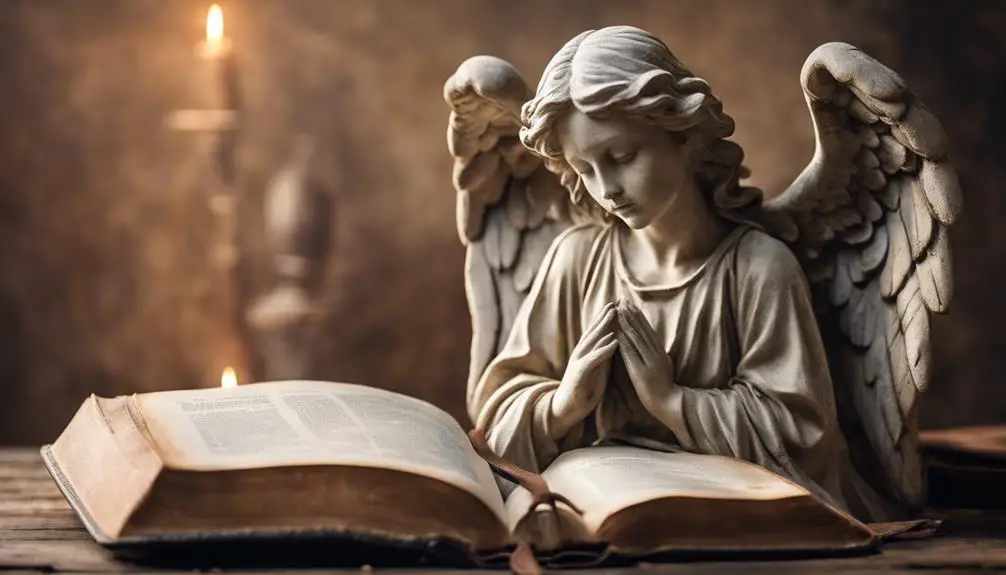
Are Weeping Angels in the Bible
You might think the Bible has every celestial creature imaginable, from seraphim with fiery swords to cherubim guarding Eden, but the concept of weeping angels might throw you for a loop. These enigmatic figures, known more broadly from modern popular culture, don't exactly match any descriptions found in ancient scriptures.
Yet, their supposed absence in the Bible does not halt the intrigue surrounding them. By exploring the origins and the scriptural analysis juxtaposed with myth and reality, you'll uncover a fascinating intersection of belief, fiction, and the enduring human fascination with angels.
What truths and embellishments have we woven around these silent watchers? Let's find out together.
Key Takeaways
- Weeping angels are not mentioned in the Bible; they are a product of folklore and artistic interpretation.
- Biblical angels are depicted as messengers or warriors, without reference to them expressing grief or weeping.
- The concept of weeping angels blends theological speculation with cultural folklore, evolving significantly from biblical descriptions.
- Artistic and literary representations of weeping angels symbolize mourning or penance, reflecting societal attitudes rather than scriptural accounts.
Understanding Biblical Angels
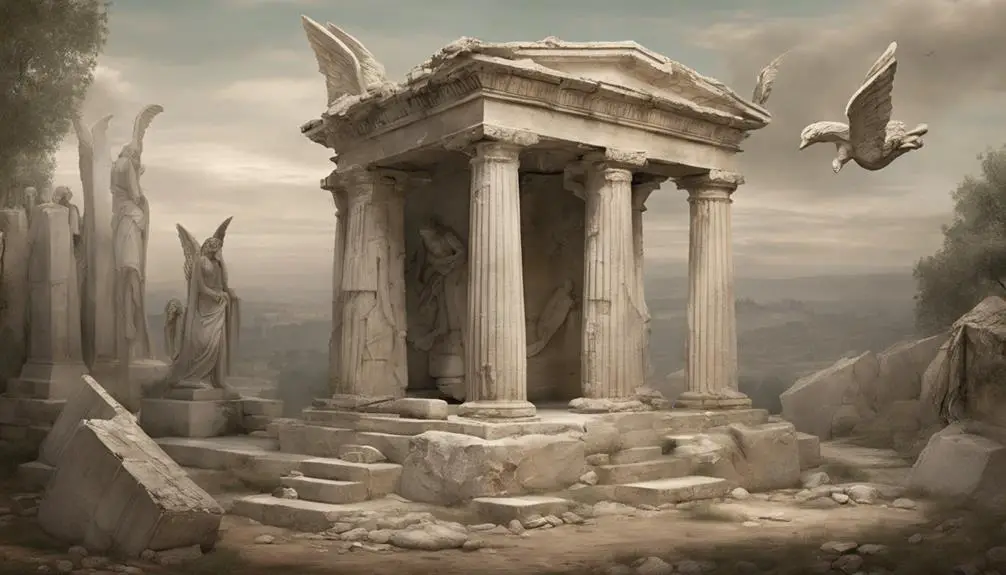
To grasp the concept of weeping angels, it's crucial to first understand the nature and roles of angels as depicted in biblical texts. In these ancient scriptures, angels are celestial beings created by God, each assigned specific duties within a structured hierarchy. This angel hierarchy is critical for maintaining order and executing divine commands across different realms. At the top, archangels hold sway, tasked with the most significant responsibilities, including delivering crucial messages to humankind.
Beneath them, other categories of angels fulfill roles that range from guardianship to worship and praise within the heavenly court. This celestial roles system ensures a well-organized distribution of tasks, from the mundane to the monumental. Angels are often depicted as messengers, warriors, and protectors, showcasing their versatility and importance in the divine schema.
Understanding these roles and the structured hierarchy illuminates the complexity and significance of angels in biblical narratives. It establishes a foundation for exploring specific types or groups of angels, such as weeping angels, within this established framework. However, it's important to note that the concept of weeping angels, as popularly known, requires a deeper dive into their origins and manifestations beyond traditional biblical accounts.
The Genesis of Weeping Angels
Several myths and narratives outside of canonical scripture mention weeping angels, but their origins in biblical texts remain ambiguous and largely unexplored. You'll find that the concept of weeping angels, as entities that embody grief or mourning, doesn't have a direct citation in the Bible. This absence sparks an intriguing discussion about angel origins in religious texts and how these have influenced later interpretations and artistic inspirations.
The genesis of weeping angels is a complex blend of folklore, theological speculation, and artistic license. When you delve into the history, you'll notice that interpretations of angels have evolved significantly over centuries. This evolution isn't just theological but also cultural, as artists and writers have drawn upon the idea of angels to convey messages of hope, despair, and divine intervention.
In examining angel origins, it's essential to recognize the role of artistic inspirations in shaping public perceptions. Artistic representations often depict angels with human emotions, including sorrow, thereby contributing to the concept of weeping angels. These depictions, while not explicitly grounded in scripture, reflect humanity's desire to understand the divine and its interactions with the world.
Scripture Analysis
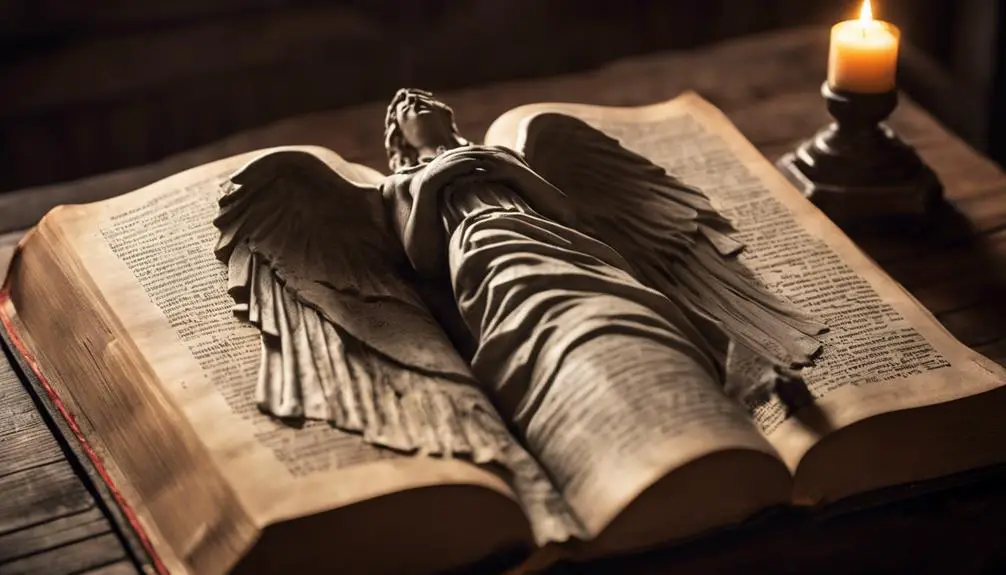
Let's now examine what the Bible says about angels, comparing these scriptural references to the concept of weeping angels developed in folklore and art. The Bible presents various angelic attributes, but the interpretive challenges arise when trying to align these descriptions with the more dramatic portrayals found in stories and visual arts.
- Angelic Nature: Angels in the Bible are depicted as messengers or warriors of God, not as sorrowful entities. This divergence raises questions about the origins of the weeping angel motif.
- Manifestations: Biblical angels often appear in human form, without explicit references to them weeping or showing other human-like emotions, which complicates direct comparisons.
- Emotional Expressions: The Bible doesn't detail angels expressing grief or sadness, suggesting that the depiction of weeping angels might be more symbolic, representing human sorrow rather than angelic attributes.
- Interpretive Challenges: The absence of weeping angels in biblical text highlights the interpretive challenges when trying to reconcile religious scriptures with folklore or artistic interpretations.
This analysis underscores the complexities involved in aligning biblical descriptions of angels with the weeping angel concept, pointing towards a more metaphorical than literal understanding in folklore and art.
Myth Vs. Reality
Distinguishing between myth and reality, it's crucial to understand that the weeping angels, as depicted in folklore and art, don't find a direct counterpart in biblical scripture. This distinction is vital when you delve into the realm of angel depictions across various cultures and religious texts. Historically, angels in the Bible are described as messengers or warriors of God, often portrayed without the sorrow or mourning inherent to the weeping angel motif.
The concept of weeping angels, steeped in myth, diverges significantly from the characteristics of supernatural beings described in religious texts. While the Bible does depict angels experiencing a range of emotions and participating in human affairs, the specific portrayal of angels as mournful or weeping is more a product of artistic interpretation rather than scriptural evidence.
This exploration into myth versus reality reveals a fascinating aspect of human culture: the evolution of supernatural beings in our collective imagination. It emphasizes the importance of distinguishing between the literal interpretations of ancient texts and the metaphorical or symbolic representations found in later artistic endeavors. Understanding this distinction helps you appreciate the depth and breadth of angel depictions without conflating them with their scriptural origins.
Cultural Impact and Interpretations
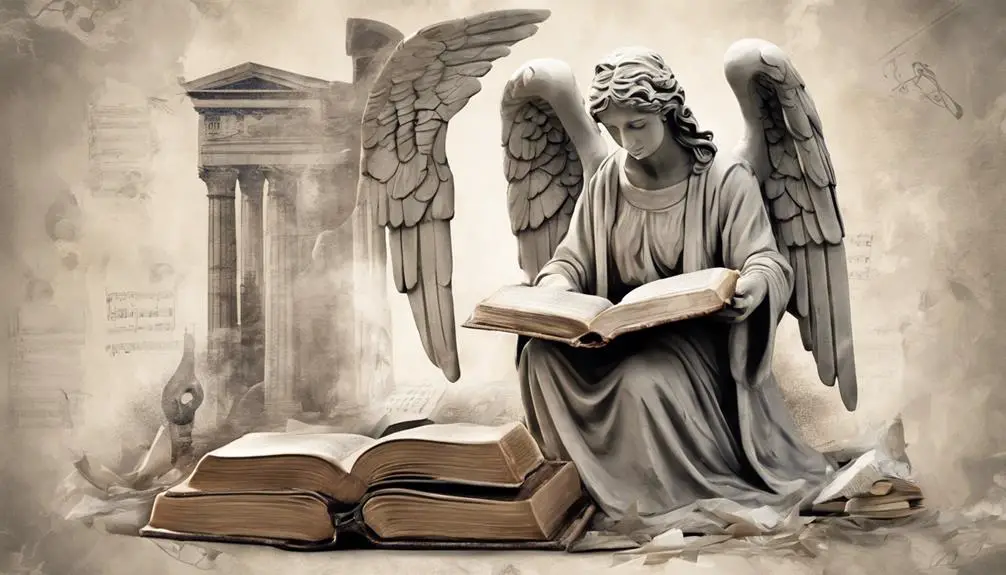
Over time, the cultural impact and interpretations of weeping angels have significantly shaped both literature and visual arts, reflecting society's evolving perceptions of the divine and the supernatural. You'll find that angelic symbolism permeates many aspects of culture, offering a rich tapestry of meaning and interpretation. Here's how:
- Moral and Ethical Guidance: Weeping angels often symbolize remorse, penance, or mourning in art representations, serving as a poignant reminder of morality's complexities and the consequences of actions. This imagery encourages introspection and ethical considerations.
- Transition and Hope: In literature, these entities frequently represent the transition between life and death, embodying hope amidst despair. Their silent sorrow suggests a profound understanding and acceptance of fate, yet hints at the promise of redemption.
- Artistic Expression and Creativity: Artists and writers have long been inspired by the mystique of weeping angels, integrating them into various works to explore themes of loss, redemption, and the unseen forces that shape our lives.
- Cultural and Historical Context: The depiction of weeping angels reflects changing societal attitudes towards death, the afterlife, and the supernatural. By examining these art representations, one gains insight into historical perspectives on these enduring human concerns.
Frequently Asked Questions
How Do Contemporary Religious Scholars Interpret the Appearance of Weeping Angels in Modern Media Compared to Traditional Angelic Representations?
When you delve into scholarly debates on media impact, it's clear that religious scholars see weeping angels in modern media as a dramatic departure from traditional angelic representations.
They often argue that these portrayals blend myth, pop culture, and theological elements, sparking a complex dialogue about faith, fear, and the supernatural.
This analysis highlights the evolving nature of angelic imagery and its profound influence on contemporary spiritual and cultural landscapes.
Are There Any Specific Rituals or Protections Mentioned in Ancient Texts to Guard Against Malevolent Entities Like Weeping Angels?
You're barking up the right tree if you're curious about ancient defenses against dark forces.
Ancient texts do mention specific rituals or protections, including the use of ancient amulets and the recitation of protective mantras, to guard against malevolent entities.
These items and chants were believed to offer a shield against evil, embodying the wisdom of the ages in combating unseen threats.
Such practices highlight a rich tapestry of spiritual safeguarding throughout history.
How Have Depictions of Weeping Angels Influenced Current Spiritual Practices or Beliefs Within Certain Religious Communities?
You'll find that depictions of weeping angels have significantly impacted religious communities, particularly through art symbolism and spiritual interpretations.
These figures, often embodying themes of sorrow and protection, have woven their way into the fabric of various faiths, subtly influencing rituals and beliefs.
Their presence in religious art not only serves as a visual reminder of these themes but also invites deeper contemplation and understanding of the spiritual realm.
Can Parallels Be Drawn Between the Psychological Impact of Weeping Angels in Fiction and the Fear of Divine Retribution in Ancient Religious Teachings?
You can indeed draw parallels between the psychological horror evoked by weeping angels in fiction and the fear of divine punishment seen in ancient religious teachings. Both concepts play on deep-seated fears of the unknown and the unstoppable, leveraging the terror of an unseen, yet omnipresent, threat.
This comparison highlights how storytelling, whether through religious texts or modern narratives, taps into fundamental human anxieties to convey potent messages.
What Are the Real-World Locations Associated With Sightings or Legends Similar to the Weeping Angels, Outside of Scriptural or Literary Contexts?
You're diving into the intriguing world of statue folklore, where 75% of cultures have tales of angelic manifestations.
Focusing on real-world locations linked to legends akin to weeping angels, you'll find these stories aren't confined to fiction.
From haunted graveyards in Europe to sacred sites in Asia, each story reflects deep-seated human fears and fascinations.
Analyzing these accounts provides a scholarly lens on how folklore mirrors societal beliefs and anxieties.
Conclusion
You've journeyed through the annals of biblical texts, distinguishing myth from reality, only to find that weeping angels, as captivating as they are, don't find their roots in Scripture.
This exploration hasn't only broadened your understanding of biblical angels but also illuminated how myth intertwines with cultural interpretations, shaping our perceptions.
So, while the weeping angels may not watch from the pages of the Bible, the quest for their origins reveals the profound impact of storytelling on our collective imagination.

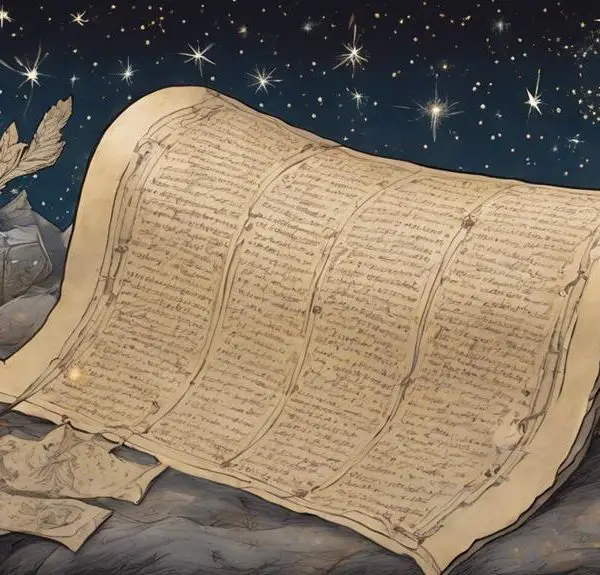

Sign up